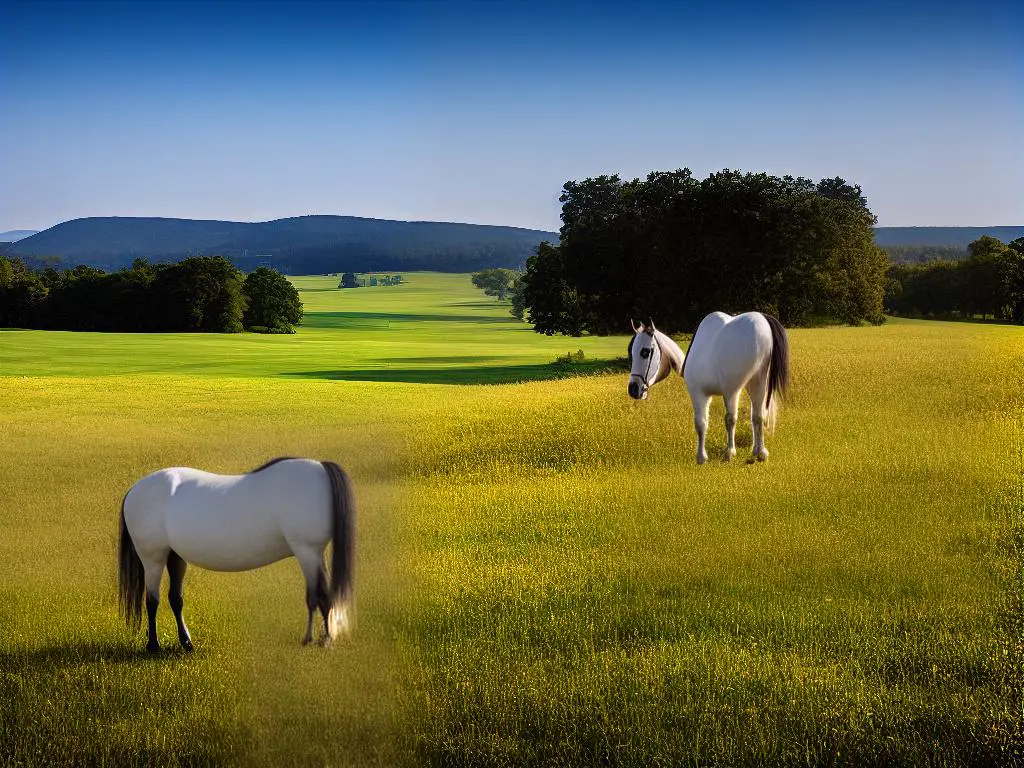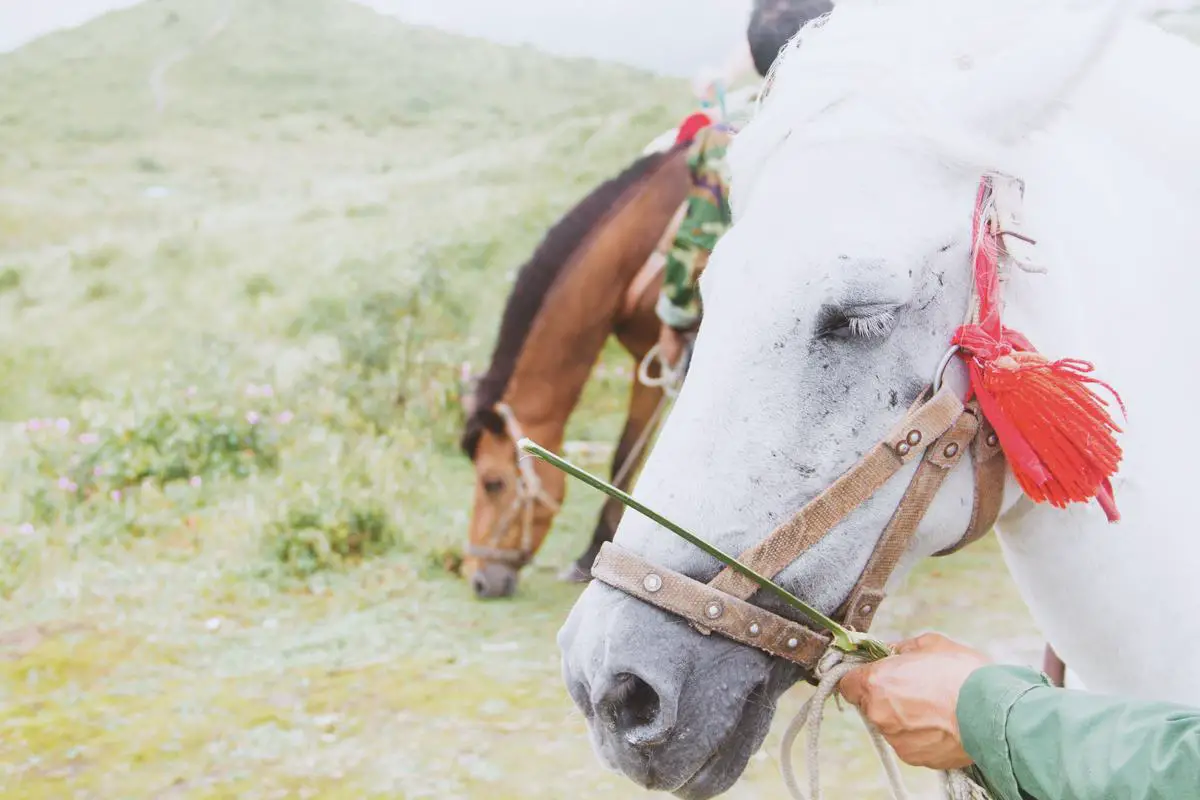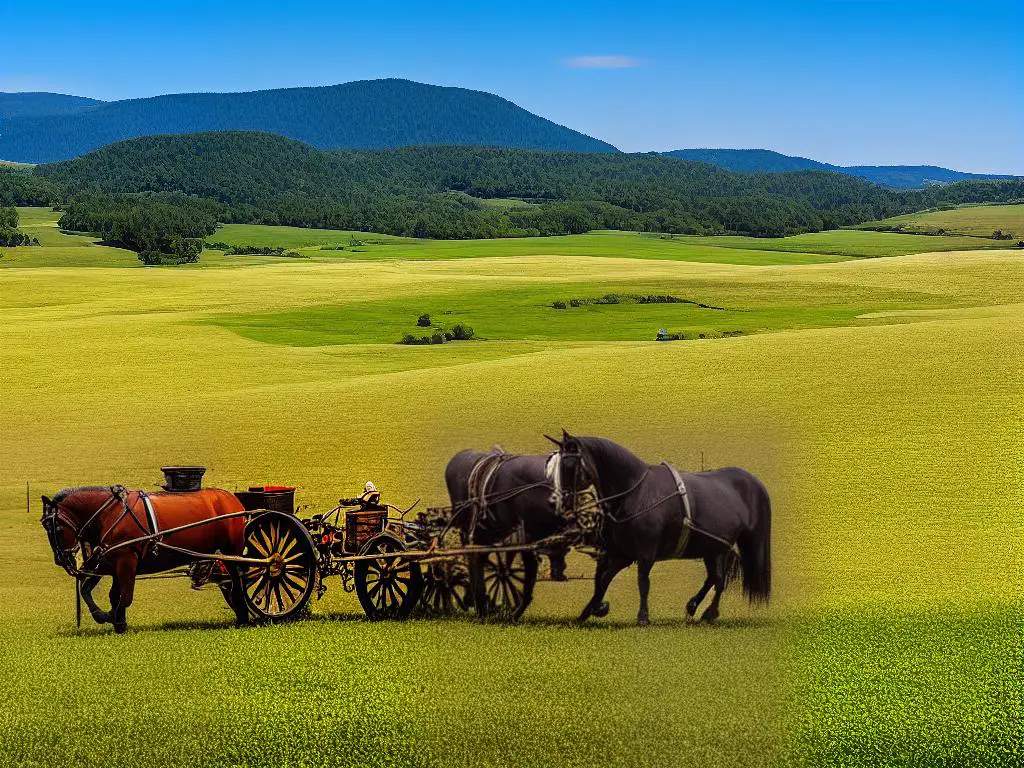The Breton Draft Horse, treasured for its tenacity and strength, traces its rich historical journey back to the Brittany region of France. This impressive breed, distinguished by its robust physique and exceptional endurance, has been an indispensable part of human civilization, fulfilling various roles across centuries from the battlefield to the farmland, and more recently, to equestrian sports. As we delve into intricate details about the Breton Draft Horse, we’ll unravel its profound origin, explain its hallmark physical characteristics and distinct variations, explore its commendable temperament and trainability, and expound on its health and care requirements – each a page from its fascinating equine tale. We will also assess its current status in modern society and the critical conservation steps needed to secure the future of this timeless symbol of equine grace and power.
Table of Contents (Horspedia)
Origins and History of the Breton Draft Horse
Origins of the Breton Draft Horse
The Breton draft horse originates from the Brittany region in northwest France. Its roots can be traced back over 2,000 years, making it one of the oldest draft breeds. The horse’s early ancestry is believed to be a result of crossing local stock with large Oriental horses brought back from Asian and Middle Eastern military campaigns.
Changes in the Breton Breed
In the post-medieval era, the need for warhorses declined while the demand for working and agricultural horses increased. This shift led to a change in breeding practices, and the Breton draft horse was gradually adapted to more agricultural uses. Two strains of Breton were developed – the heavy draft (“postier”) for farm work, and the lighter draft (“tracteur”) for pulling carts or carriages.
Later, during the 19th and 20th centuries, further development of the breed occurred due to scarcity of food and the need for stronger horses to work in hilly, rocky areas. This gave rise to the smaller yet equally robust “mountain” type of Breton.
Breton Draft Horse: From France to the World
Although internationally less well-known than some other draft breeds, the Breton is highly regarded in its native region and beyond. In France, it is predominantly used for heavy draft and farm work, but also shows versatility in meat production due to its well-muscled body.
The introduction of the Breton Draft Horse to other countries started in the late 19th century. It was first imported to the United States in 1906. Today, Bretons can be found in several countries around the world, including the United States, Belgium, Italy, and Canada. They are utilized for a variety of purposes, including forestry, agriculture, and even under saddle and in-driving events.
The Breton Draft Horse, despite technological advancements and changes in time, has proven an essential and multipurpose asset across various societies. Its impact continues to define the story of draft horses and their significant role in our worldwide history.

Physical Characteristics and Varieties
Physical Traits: A Majestic Display of Strength and Power
Known as a breed of heavy horses, the Breton Draft Horse combines power, typically mild temperament, and adaptability. Just like the people from Brittany, the region they originate, these horses are built to survive and thrive in harshest environments.
Notable for their solid and sturdy posture, Bretons usually measure around 1.55 to 1.65 meters (approximately 15 to 16 hands) tall at their withers. Their muscular built, characterized by a wide chest, potent legs, and a short, thick neck, compliments their strong frame.
Males of this breed typically tip the scales between 880 to 1,100 kilograms, with females weighing between 800 to 1,000 kilograms. Surprisingly agile for their size, Bretons impress with their nimbleness and solid, straight hooves.
Their aesthetic charm can often be attributed to the various shades of their coats, with chestnut and roan being the dominant colors. Their wide forehead is elegantly accentuated by their expressive eyes, often described as windows to a wise and gentle soul.
Discovering the Breton Draft Horse’s Diversity
The Breton Draft Horse is comprised of several distinct subtypes, each boasting a unique set of characteristics. The primary subtypes are the Trait Breton and the Postier Breton.
Recognized as the original type of the breed, the Trait Breton exhibits the most strength. It has the conventional characteristics of a draft horse and is commonly used for farming tasks. Its large size and muscular body are trademarks of the Trait Breton, and it can often weigh up to 1,200 kilograms.
In contrast, the Postier Breton has a less bulky build compared to the Trait Breton. Despite its lighter physique, it possesses the base traits and power of the breed. The Postier variety is recognized for its refined physic and impressively agile nature, making it a popular choice in harness competitions.
Knowledge of these subtypes is integral not just for potential owners and breeders, but also for horse-lovers around the world. The defining features of this breed – its robust structure, substantial weight, variety of coat colors, and moderate height – establishes it as a striking symbol of strength and elegance. With the Trait Breton and Postier Breton subtypes emphasizing the breed’s heritage and genetic diversity, the Breton Draft Horse stands as a captivating model in the equine world.

Temperament and Trainability
Diving into the Breton Draft Horse’s Temperament and Personality Traits
The Breton Draft Horse, hailing from Brittany in northwest France, is revered for its affable character. Generally known for their tranquil and obedient nature, these horses have a great rapport with humans and other animals. Their remarkable patience and serene attitude make them a top pick for work in various sectors, including agriculture, forestry, and even leisurely riding.
Intelligence and Trainability
Breton Draft Horses possess a remarkable level of intelligence that contributes to their high trainability. Their capacity to grasp commands, remember routines and adapt to different working circumstances is extraordinary. This intelligence, combined with their inherent obedient nature, makes them highly trainable.
Training a Breton Draft Horse does not usually demand specialized skills due to their natural inclination to follow directives. These horses possess an earnest willingness to serve and a certain flexibility that allows them to apply their skills in various disciplines. They are also notably quick learners, which reduces training time and minimizes complications during the process.
Suitability for various types of work and riding
Given their robust physique and hard-working nature, Breton Draft Horses are suitable for various types of work. Historically, they have been used primarily in agriculture and forestry due to their immense strength and stamina. Their sturdy conformation and remarkable endurance make them capable of heavy pulling and long hours of labor.
But, their utility is not limited to fieldwork. In recent times, Breton Draft Horses have been incorporated into various equestrian sports. Their calm demeanor and incredible strength make them ideal for carriage driving, riding, and even dressage. The adaptability of this breed allows for use in therapeutic riding programs as well, primarily due to their gentle manner and the steady, comfortable gait they offer to riders.
Unique Behavioral Traits
Aside from their working capabilities, Breton Draft Horses have several unique behavioral traits that make them stand out. They are characterized as being highly social and thrive in environments where they can interact with both humans and other horses. They are also incredibly tolerant, displaying patience with inexperienced handlers or riders, making them a great horse breed choice for beginners.
Breton Draft Horses display upfront honesty in their behavior. They are straightforward horses that respond well to clear, consistent commands. This clear-cut demeanor can be a boon for riders and trainers, as it simplifies communication and builds trust quickly.
In Summation
The Breton Draft Horse’s adaptability, power, and friendly disposition make it a treasured breed. Regardless of whether it’s used for tough labor in the fields, leisurely riding, or engaging in equestrian sports, the Breton displays an unwavering dependability and flexibility.

Photo by alpacccca on Unsplash
Health and Care Requirements
General Wellness and Breton Draft Horse Care Requirements
The Breton Draft Horse, with roots in France, is a breed recognized for its robust framework and vigour. Despite its reputation for strength and resilience, however, this breed still necessitates consistent and diligent care to sustain peak health.
Those responsible for Breton Draft Horses must ensure they receive a balanced diet. Usually, these horses flourish on a diet that includes quality hay or grass, grains, and select equine supplements to compensate for any shortfalls in their nutrition. Special consideration should be given to their intake of vitamins and minerals. An equine dietitian or a vet can assist with determining their precise dietary requirements.
Considering their historic role in hard labor, the breed has developed to be remarkably active. Therefore, Breton Draft Horses need consistent exercise to remain in good physical and mental health. In the absence of sufficient exercise, they could potentially face physical and psychological health problems.
Specific Health Issues and Veterinary Considerations
While the Breton Draft Horse has generally been deemed as a healthy breed, they are prone to some unique health issues. One specific ailment is Chronic Progressive Lymphedema (CPL). This inflammatory disease leads to progressive swelling and thickening of the skin over the limbs, potentially leading to lameness if left untreated.
Another health issue common to this breed is Carbohydrate-Induced Laminitis, which can be triggered by consuming high quantities of grains. Ongoing research has indicated that diet manipulation and a shift towards low-starch and low-sugar feed can reduce the likelihood of this condition.
Vets often need to focus on clean living conditions and regular hoof care to prevent diseases, and a regular vet-check schedule is highly recommended. They should pay close attention to their weight as obesity could lead to a variety of health complications such as laminitis and other metabolic diseases.
Grooming Requirements
Regular grooming is essential for Breton Draft Horses. Due to their heavier coats, they are prone to external parasites and skin infections. Brushing will not only keep the horse’s coat healthy and shiny but is also a good way to check for any lumps, cuts, or parasites. Regular hoof cleaning is also necessary to prevent hoof-related disorders.
Final Thoughts
The Breton Draft Horse, despite its inherent health and strength, requires devoted and conscientious care. Owners and veterinarians must be extremely vigilant, ensuring the overall health and welfare of this majestic species.

Current Role and Conservation
The Breton Draft Horse in Modern Society
The Breton Draft Horse plays a unique and enduring part in our contemporary world, notably in agriculture and forestry. Its defining traits comprise aesthetic charm, extraordinary strength, stamina, and hardiness, making it a standout breed. Whether plowing fields or hauling heavy timber loads, the impressive versatility and power of the Breton Draft Horse shine.
Moreover, this breed is gaining recognition in the equestrian sports scene, particularly in weight pulling events. Due to centuries of selective breeding, these horses can pull several multiples of their weight, making them distinguished competitors. Their temperament, simultaneously tranquil and willing, makes them great participants in riding and driving contests, showcasing their adaptability and training potential.
Conservation Efforts: Preserving a Historic Equine Legacy
Due to the industrialization of agriculture and forestry, the demand for draft horses, including Breton, has declined over the years. This has led to a reduction in their population, raising concerns over their long-term survival and genetic diversity. As a result, various breeding and conservation programs have been implemented, both in their native France and globally.
One such effort is the Breton Draft Horse Association of France, which provides registry services and promotes the breed through exhibitions, competitions, and auctions. They track Breton genetics and breeding to ensure the preservation of this historic French draft horse.
In the United States, organizations like the Livestock Conservancy and Draft Horse Rescue Project also work towards the preservation of the breed. These initiatives offer rescue services for neglected or abused draft horses and provide resources to help individuals understand, raise, and care for these horses.
Impact on the Equine World: Celebrating the Breton Draft Horse
Breton Draft Horses have made an indelible impact on the equine world. They have contributed to the development of various horse breeds, such as the popular Ardennes and Percheron, and have instilled valuable genetic traits that improve endurance, strength, and versatility.
From their humble origins in Brittany, France, Bretons have captured the hearts of horse enthusiasts around the world. Their endurance, power, and cooperative nature, combined with their significant historical contribution to warfare, agriculture, and transportation, make preserving their legacy a salient task for conservationists and horse lovers alike.
In conclusion, the Breton Draft Horse continues to be a crucial part of modern agriculture, forestry, and equestrian sports, and there is a collective responsibility to ensure the continuous survival of the breed through effective conservation efforts.

Today, the Breton Draft Horse continues to play a significant role in various sectors, owing to its unrelenting strength, resilience, and monumental contribution to the equine world. It seamlessly blends into contemporary settings as much as it stood the test of time, symbolically stamping its hoofprints in agriculture, forestry, and equestrian sports. However, its survival is not without challenges, making conservation efforts paramount to ensure its sustainability. The Breton Draft Horse stands as a tribute to its enduring heritage – an embodiment of strength, versatility, and humble service. This powerful breed is more than just a species; it is a testament to nature’s grandeur and our shared history. Its tale, both of past endeavours and future hopes, continues to gallop on, captivating the hearts of horse enthusiasts and casual observers alike.